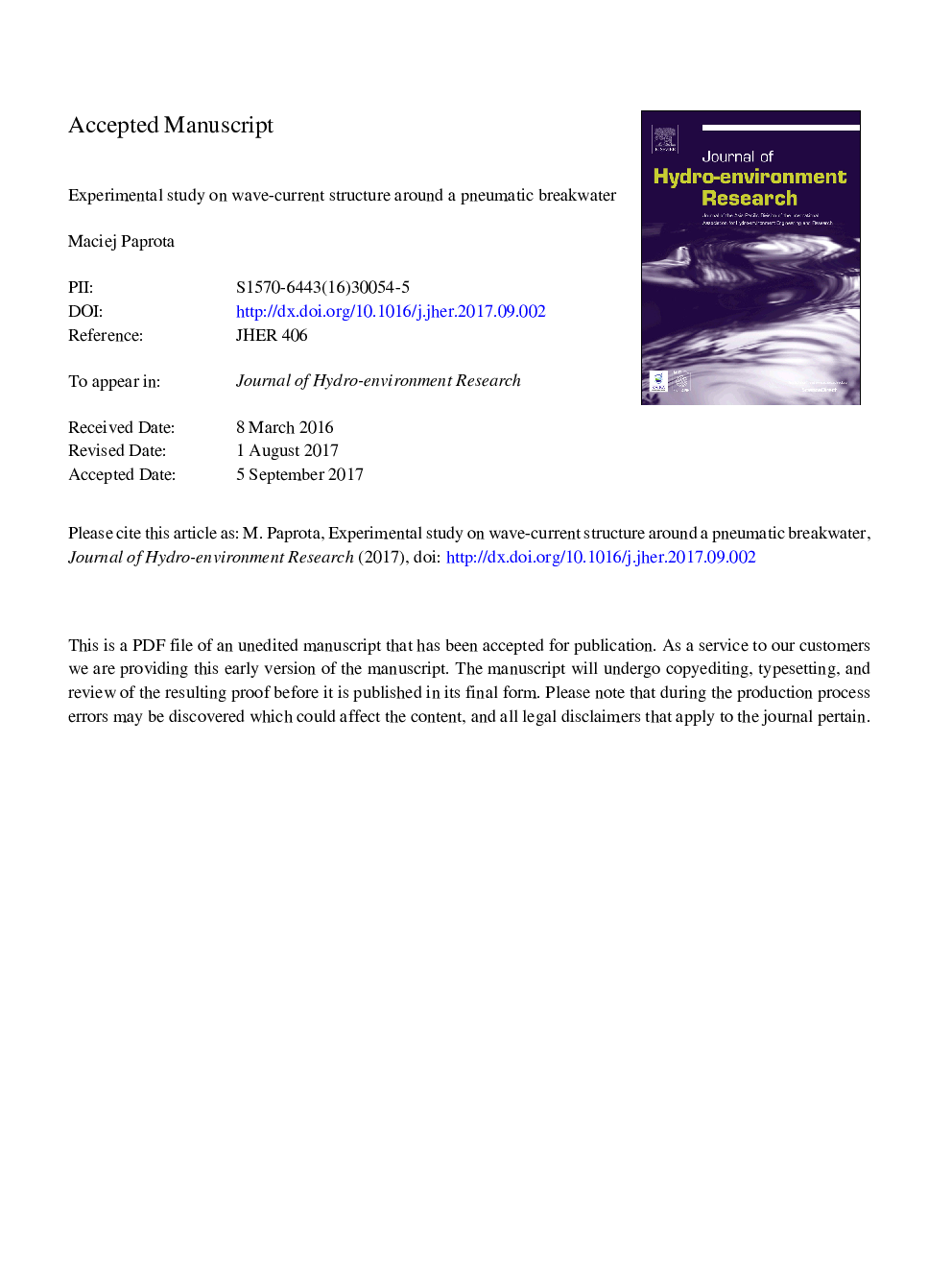| Article ID | Journal | Published Year | Pages | File Type |
|---|---|---|---|---|
| 5759871 | Journal of Hydro-environment Research | 2017 | 36 Pages |
Abstract
A model of a pneumatic breakwater comprised of perforated pipes placed on a wave flume bottom and connected to a piston-type air compressor is installed in a wave flume. Ascending air bubbles form an aerial barrier which dissipates wave energy and reduces the height of transmitted waves. The model is exposed to regular waves with fixed parameters, and its properties are modified by changing the amount of air supplied to the pipes. Particle Image Velocimetry and Acoustic Doppler Velocimetry methods are employed to measure a wave-current velocity field in the close vicinity of a submerged aerial barrier used as a breakwater. The measurements are supported by free-surface elevation registration in order to evaluate the effectiveness of the pneumatic breakwater in damping waves and to identify processes responsible for wave energy dissipation. Basing on the measurements, the performance of the pneumatic breakwater in different wave conditions is analysed. The results indicate that the dissipation of energy inside a region of a turbulent flow induced by ascending air bubbles may be considered the main mechanism of wave energy attenuation by pneumatic breakwaters.
Keywords
Related Topics
Life Sciences
Agricultural and Biological Sciences
Agricultural and Biological Sciences (General)
Authors
Maciej Paprota,
